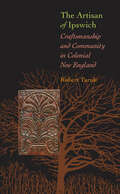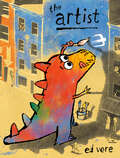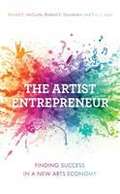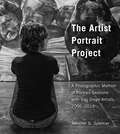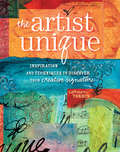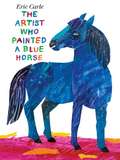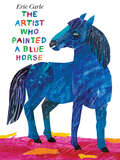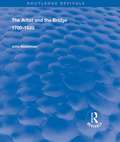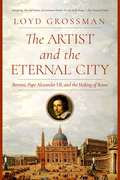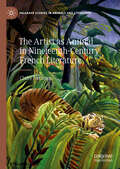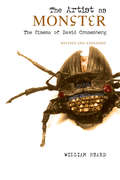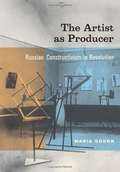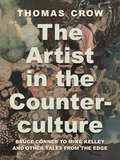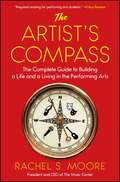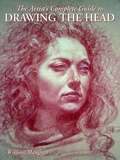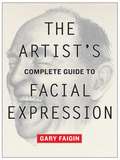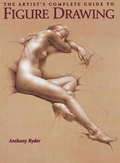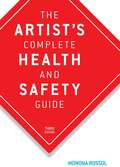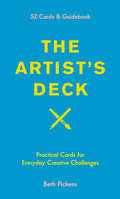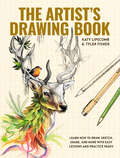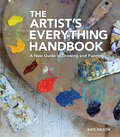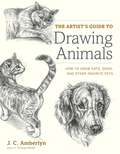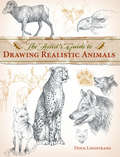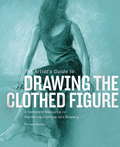- Table View
- List View
The Artisan of Ipswich: Craftsmanship and Community in Colonial New England
by Robert TaruleThomas Dennis emigrated to America from England in 1663, settling in Ipswich, a Massachusetts village a long day's sail north of Boston. He had apprenticed in joinery, the most common method of making furniture in sixteenth- and seventeenth-century Britain, and he became Ipswich's second joiner, setting up shop in the heart of the village. During his lifetime, Dennis won wide renown as an artisan. Today, connoisseurs judge his elaborately carved furniture as among the best produced in seventeenth-century America.Robert Tarule, historian and accomplished craftsman, brilliantly recreates Dennis's world in recounting how he created a single oak chest. Writing as a woodworker himself, Tarule vividly portrays Dennis walking through the woods looking for the right trees; sawing and splitting the wood on site; and working in his shop on the chest—planing, joining, and carving. Dennis inherited a knowledge of wood and woodworking that dated back centuries before he was born, and Tarule traces this tradition from Old World to New. He also depicts the natural and social landscape in which Dennis operated, from the sights, sounds, and smells of colonial Ipswich and its surrounding countryside to the laws that governed his use of trees and his network of personal and professional relationships.Thomas Dennis embodies a world that had begun to disappear even during his lifetime, one that today may seem unimaginably distant. Imaginatively conceived and elegantly executed, The Artisan of Ipswich gives readers a tangible understanding of that distant past.
The Artist
by Ed VereA brave little artist goes on an epic adventure to share her creativity with the world in this picture book from New York Times bestselling author-illustrator Ed Vere. It's an inspiring exploration of the creative spirit, perfect for fans of What Do You Do with an Idea? and The Dot.Creative young children will see themselves and the world around them in a fresh light in this charming story about an artistic soul. Through setbacks and triumphs, our young hero adds color and life to a drab gray city, bringing beauty to those who live there. It's a journey that reminds us that it's okay to color outside the lines: Art is full of heart! The Artist is a perfect gift for creative kids, graduates, or anyone setting out on a new path, encouraging them to face life&’s obstacles with a positive outlook.
The Artist Entrepreneur: Finding Success In a New Arts Economy
by Ronald C. McCurdy Richard E. Goodstein Eric J. LapinThe twenty-first-century art world offers performers and professionals an unrivaled variety of opportunities, but also requires a never-before-seen investment in skills beyond artistic talent. Today's artists must build sustainable success in this new arts economy through collaborative big-idea thinking that celebrates a continual engagement in creative process. <p><p> Presenting creativity as a process with unlimited applications, The Artist Entrepreneur empowers young artists to step into the new arts landscape and build their own careers. Along the way, the book demystifies essential business skills from self-promotion, branding, touring, and intellectual property exploitation to contracts, revenue sources, and bookkeeping. Addressing students from across the artistic spectrum, this book offers practical exercises to develop individual skills while empowering a new generation of artist entrepreneurs with the promise of a new arts economy.
The Artist Portrait Project: A Photographic Memoir of Portraits Sessions with San Diego Artists, 2006-2016
by Jennifer G. SpencerAfter five years&’ absence from San Diego&’s art community, Jennifer G. Spencer returned and began to photograph the artists she became acquainted with during her thirteen-year stint as an executive director of a visual arts organization—a project that became a ten-year journey. In The Artist Portrait Project, Spencer reveals the results of her adventure in portraiture after her retirement, and shares how this endeavor enlightened and shaped her opinion of these fifty artists and her art community. Engaging and visually stunning, The Artist Portrait Project is a book about self-discovery and the persistence of the creative spirit.
The Artist Unique: Discovering Your Creative Signature Through Inspiration and Techniques
by Carmen TorbusMake your mark your way! Every artist seeks to stand apart from the crowd. But how? Let author Carmen Torbus inspire you to new creative highs in this collection of hands-on techniques and heartfelt stories from 16 artists who have worked through their own artistic struggles and stalls to emerge triumphant, with looks uniquely their own. Whether art is new to you, or you have been at it awhile and are having trouble discovering your own style, this encouraging book will guide you to experiment with different mediums, techniques and possibilities to make a mark that is exclusively yours. Inside you'll find: 17 of the artists' favorite mixed-media techniques shown step by step, with suggestions for how to make them your own Beautiful finished art illustrating how individual artists use and combine these techniques in their own work Easy worksheets to help reveal your artistic skills, strengths and preferences A quick-start guide to various mediums, mark makers and creative paraphernalia Lots of tips and advice for putting yourself into your art Embrace who you are and find out what defines you as an artist. Make your art far from ordinary--become the artist UNIQUE!
The Artist Who Painted a Blue Horse
by Eric CarleA brilliant new Eric Carle picture book for the artist in us all Every child has an artist inside them, and this vibrant picture book from Eric Carle will help let it out. The artist in this book paints the world as he sees it, just like a child. There's a red crocodile, an orange elephant, a purple fox and a polka-dotted donkey. More than anything, there's imagination. Filled with some of the most magnificently colorful animals of Eric Carle's career, this tribute to the creative life celebrates the power of art.
The Artist Who Painted a Blue Horse
by Eric CarleA brilliant new Eric Carle picture book for the artist in us allEvery child has an artist inside them, and this vibrant picture book from Eric Carle will help let it out. The artist in this book paints the world as he sees it, just like a child. There's a red crocodile, an orange elephant, a purple fox and a polka-dotted donkey. More than anything, there's imagination. Filled with some of the most magnificently colorful animals of Eric Carle's career, this tribute to the creative life celebrates the power of art.
The Artist and the Bridge: 1700-1920 (Routledge Revivals)
by John SweetmanFirst published in 1999, this book explores how, from the stone bridges of neoclassicism which soar out of wild woods to span pastoral valleys to the post-1750 engineer’s bridge with its links to the more industrial landscape, the bridge was a popular feature in painting throughout the period 1700-1920. Why did so many artists choose to portray bridges? In this lavishly illustrated and intriguing book, John Sweetman seeks to answer this question. He traces the history of the bridge in painting and printmaking through a vast range of work, some as familiar as William Etty’s The Bridge of Sighs and Claude Monet’s The Railway Bridge at Argenteuil and others less well known such as Wassily Kandinsky’s Composition IV and C.R.W. Nevinson’s Looking Through the Brooklyn Bridge. Distinctive characteristics emerge revealing the complex role of the bridge as both symbol and metaphor, and as a place of vantage, meeting and separation.
The Artist and the Eternal City: Bernini, Pope Alexander VII, and The Making of Rome
by Loyd GrossmanThis brilliant vignette of seventeenth-century Rome, its Baroque architecture, and its relationship to the Catholic Church brings to life the friendship between a genius and his patron with an ease of writing that is rare in art history.By 1650, the spiritual and political power of the Catholic Church was shattered. Thanks to the twin blows of the Protestant Reformation and the Thirty Years War, Rome—celebrated both as the Eternal City and Caput Mundi (the head of the world)—had lost its preeminent place in Europe. Then a new Pope, Alexander VII, fired with religious zeal, political guile, and a mania for creating new architecture, determined to restore the prestige of his church by making Rome the key destination for Europe's intellectual, political, and cultural elite. To help him do so, he enlisted the talents of Gianlorenzo Bernini, already celebrated as the most important living artist—no mean feat in the age of Rubens, Rembrandt, and Velazquez.
The Artist as Animal in Nineteenth-Century French Literature (Palgrave Studies in Animals and Literature)
by Claire NettletonThe Artist as Animal in Nineteenth-Century French Literature traces the evolution of the relationship between artists and animals in fiction from the Second Empire to the fin de siècle. This book examines examples of visual literature, inspired by the struggles of artists such as Edouard Manet and Vincent van Gogh. Edmond and Jules de Goncourt’s Manette Salomon (1867), Émile Zola’s Therèse Raquin (1867), Jules Laforgue’s “At the Berlin Aquarium” (1895) and “Impressionism” (1883), Octave Mirbeau’s In the Sky (1892-1893) and Rachilde’s L’Animale (1893) depict vanguard painters and performers as being like animals, whose unique vision revolted against stifling traditions. Juxtaposing these literary works with contemporary animal theory (McHugh, Deleuze, Guattari and Derrida), zoo studies (Berger, Rothfels and Lippit) and feminism (Donovan, Adams and Haraway), Claire Nettleton explores the extent to which the nineteenth-century dissolution of the human subject contributed to a radical, modern aesthetic. Utilizing these interdisciplinary methodologies, Nettleton argues that while inducing anxiety regarding traditional humanist structures, the “artist-animal,” an embodiment of artistic liberation within an urban setting, is, at the same time, a paradigmatic trope of modernity.
The Artist as Monster: The Cinema of David Cronenberg
by William BeardPAPERBACK INCLUDES TWO NEW CHAPTERSDavid Cronenberg is one of the most fascinating filmmakers in the world today. His provocative work has stimulated debate and received major retrospectives in museums, galleries, and cinematheques around the world. William Beard's The Artist as Monster was the first book-length scholarly work in English on Cronenberg's films, analyzing all of his features from Stereo (1969) to Crash (1996). In this paperback edition, Beard includes new chapters on eXistenZ (1999) and Spider (2002).Through close readings and visual analyses, Beard argues that the structure of Cronenberg's cinema is based on a dichotomy between, on the one hand, order, reason, repression, and control, and on the other, liberation, sexuality, disease, and the disintegration of self and of the boundaries that define society. The instigating figure in the films is a scientist character who, as Cronenberg evolves as a filmmaker, gradually metamorphoses into an artist, with the ground of liberation and catastrophe shifting from experimental subject to the self.Bringing a wealth of analytical observation and insight into Cronenberg's films, Beard's sweeping, comprehensive work has established the benchmark for the study of one of Canada's best-known filmmakers.
The Artist as Producer: Russian Constructivism in Revolution
by Maria GoughThe Artist as Producer reshapes our understanding of the fundamental contribution of the Russian avant-garde to the development of modernism. Focusing on the single most important hotbed of Constructivist activity in the early 1920s--the Institute of Artistic Culture (INKhUK) in Moscow--Maria Gough offers a powerful reinterpretation of the work of the first group of artists to call themselves Constructivists. Her lively narrative ranges from famous figures such as Aleksandr Rodchenko to others who are much less well known, such as Karl Ioganson, a key member of the state-funded INKhUK whose work paved the way for an eventual dematerialization of the integral art object. Through the mining of untapped archives and collections in Russia and Latvia and a close reading of key Constructivist works, Gough highlights fundamental differences among the Moscow group in their handling of the experimental new sculptural form--the spatial construction--and of their subsequent shift to industrial production. The Artist as Producer upends the standard view that the Moscow group's formalism and abstraction were incompatible with the sociopolitical imperatives of the new Communist state. It challenges the common equation of Constructivism with functionalism and utilitarianism by delineating a contrary tendency toward non-determinism and an alternate orientation to process rather than product. Finally, the book counters the popular perception that Constructivism failed in its ambition to enter production by presenting the first-ever case study of how a Constructivist could, and in fact did, operate within an industrial environment. The Artist as Producer offers provocative new perspectives on three critical issues--formalism, functionalism, and failure--that are of central importance to our understanding not only of the Soviet phenomenon but also of the European vanguards more generally.
The Artist in the Counterculture: Bruce Conner to Mike Kelley and Other Tales from the Edge
by Thomas CrowHow California’s counterculture of the 1960s to 1980s profoundly shaped—and was shaped by—West Coast artistsThe 1960s exert a special fascination in modern art. But most accounts miss the defining impact of the period’s youth culture, largely incubated in California, on artists who came of age in that decade. As their prime exemplar, Bruce Conner, reminisced, “I did everything that everybody did in 1967 in the Haight-Ashbury. . . . I would take peyote and walk out in the streets.” And he vividly channeled those experiences into his art, while making his mark on every facet of the psychedelic movement—from the mountains of Mexico with Timothy Leary to the rock ballrooms of San Francisco to the gilded excesses of the New Hollywood. In The Artist in the Counterculture, Thomas Crow tells the story of California art from the 1960s to the 1980s—some of the strongest being made anywhere at the time—and why it cannot be understood apart from the new possibilities of thinking and feeling unleashed by the rebels of the counterculture.Crow reevaluates Conner and other key figures—from Catholic activist Corita Kent to Black Panther Emory Douglas to ecological witness Bonnie Ora Sherk—as part of a generational cohort galvanized by resistance to war, racial oppression, and environmental degradation. Younger practitioners of performance and installation carried the mindset of rebellion into the 1970s and 1980s, as previously excluded artists of color moved to the forefront in Los Angeles. Mike Kelley, their contemporary, remained unwaveringly true to the late countercultural flowering he had witnessed at the dawn of his career.The result is a major new account of the counterculture’s enduring influence on modern art.
The Artist's Compass: The Complete Guide to Building a Life and a Living in the Performing Arts
by Rachel MooreAn inspiring, real world guide for artists in the classic bestselling tradition of What Color Is Your Parachute? that shows how to build a successful, stable career in the performing arts, from the President and CEO of the Los Angeles Music Center who has carved her own success through her creative talent and business skill.While performing artists have many educational opportunities to perfect their craft, they are often on their own when it comes to learning the business skills necessary to launch their careers. At the end of the day, show business is, well, a business. In The Artist's Compass, Los Angeles Music Center CEO Rachel Moore shares how to make life as a performer more successful, secure, and sustainable by approaching a career in the arts like an entrepreneur. A former dancer in the American Ballet Theatre's corps de ballet, Moore knows firsthand what it's like to struggle and succeed as an artist. Now in an offstage role as CEO, Moore shares the hard-won lessons she's learned about making one's own success and encourages every performer to develop creative talent alongside marketable skills. With testimonials from artists like Lang Lang, Sigourney Weaver, and Renee Fleming, plus inspiring anecdotes from Moore's own journey in the arts, The Artist's Compass teaches aspiring performers how to think like an entrepreneur to create their own brand and marketing platform to achieve personal and professional success. In an engaging, realistic, and authoritative voice, Moore combines her artistic and corporate experience to address the finer points of building a career in a challenging industry, teaching young performers how to achieve financial independence so that they might have creative independence.
The Artist's Complete Guide to Drawing the Head
by William MaughanIn this innovative guide, master art instructor William Maughan demonstrates how to create a realistic human likeness by using the classic and highly accurate modeling technique of chiaroscuro (Italian for "light and dark") developed by Leonardo da Vinci during the High Renaissance.Maughan first introduces readers to the basics of this centuries-old technique, showing how to analyze form, light, and shadow; use dark pencil, white pencil, and toned paper to create a full range of values; use the elements of design to enhance a likeness; and capture a sitter's gestures and proportions. He then demonstrates, step by step, how to draw each facial feature, develop visual awareness, and render the head in color with soft pastels.
The Artist's Complete Guide to Facial Expression
by Gary FaiginArtists love this book, the definitive guide to capturing facial expressions. In a carefully organized, easy-to-use format, author Gary Faigin shows readers the expressions created by individual facial muscles, then draws them together in a section devoted to the six basic human emotions: sadness, anger, joy, fear, disgust, and surprise. Each emotion is shown in steadily increasing intensity, and Faigin's detailed renderings are supplemented by clear explanatory text, additional sketches, and finished work. An appendix includes yawning, wincing, and other physical reactions. Want to create portraits that capture the real person? Want to draw convincing illustrations? Want to show the range of human emotion in your artwork? Get The Artist's Complete Guide to Facial Expression!From the Trade Paperback edition.
The Artist's Complete Guide to Figure Drawing
by Anthony RyderMany of us want to learn "how to draw." But as artist Anthony Ryder explains, it's much more important to learn what to draw. In other words, to observe and draw what we actually see, rather than what we think we see. When it comes to drawing the human figure, this means letting go of learned ideas and expectation of what the figure should look like. It means carefully observing the interplay of form and light, shape and line, that combine to create the actual appearance of human form. In The Artist's Complete Guide to Figure Drawing, amateur and experienced artists alike are guided toward this new way of seeing and drawing the figure with a three-step drawing method.The book's progressive course starts with the block-in, an exercise in seeing and establishing the figure's shape. It then build to the contour, a refined line drawing that represents the figure's silhouette. The last step is tonal work on the inside of the contour, when light and shadow are shaped to create the illusion of form. Separate chapters explore topics critical to the method: gesture, which expresses a sense of living energy to the figure; light, which largely determines how we see the model; and form, which conveys the figure's volume and mass. Examples, step-by-steps, and special "tips" offer helpful hints and practical guidance throughout.Lavishly illustrated with the author's stunning artwork, The Artist's Complete Guide to Figure Drawing combines solid instruction with thoughtful meditations on the art of drawing, to both instruct and inspire artists of all levels.
The Artist's Complete Health and Safety Guide: Konqueror, Kdevelop, Opera, Calligra Suite, Skype, Amarok, Kde Software Compilation 4, Vlc Media Player, Kontact, K3b, Scribus, Digikam, Ktorrent, Rekonq, Clementine, Doxygen, Kvirc, Musescore, Konversation, Umbrello, Kget, Kopete
by Monona RossolDozens of at-a-glance tables and charts present vital information about art materials, ingredients, technical hazards, proper protective equipment, and safe work practices simply and accurately. This brand-new third edition is now completely revised and expanded to detail lifesaving new safety and ventilation equipment, present urgent new discoveries on toxins and pollutants found in arts and crafts materials, and explain the controversies surrounding new government regulations. A virtual lifesaver for all art and craft workers.
The Artist's Deck: Practical Cards for Everyday Creative Challenges
by Beth PickensA healing tool that empowers creatives of all types to confront their shadows and embrace their art. Whether you are grappling with jealousy, rejection, imposter syndrome, or over-commitment, this 52-card deck can help you face your fears and transmute them into opportunities for expansion, creativity, and growth.Creative roadblocks are a fact of life for every artist, and every artist needs tools to help them clear the path. Enter The Artist's Deck, created by arts counselor and author Beth Pickens, to help you return to your art, no matter what obstacles you encounter.In this handy, interactive card deck, Pickens identifies common traps, feelings, myths, and blocks that artists encounter and offers insight into working through each one. Each card describes an obstacle and poses reflection questions and exercises to transform that obstacle into a source of inspiration and generative energy. Whether you seek guidance on a specific topic or use the deck as an oracle tool to inspire growth, The Artist's Deck will support you as you work through the creative challenges that come your way.CREATIVITY + SELF-CARE: Mindfulness Cards meet The Artist’s Way in this self-help tool crafted specifically for artists. Select a card and develop a practice of reflection and action to acknowledge your anxieties, consider new perspectives and approaches, and overcome creative hurdles with self-awareness and self-compassion.EXPERT AUTHOR: Beth Pickens holds a master’s degree in counseling psychology and has a long history of experience advising and supporting artists and arts organizations. She is perfectly positioned to offer advice on navigating the many challenges—structural and internal, practical and metaphysical—that artists face. A VERSATILE TOOL: The Artist's Deck is portable, adaptable, succinct, and flexible—it's a hands-on, tactile tool for disrupting the patterns that keep you from making your art. Keep it in your bag and reach for it whenever you need it, whether you're at home, in the studio, on a train, in an office, or going off the grid at an immersive retreat.Perfect for:Artists, illustrators, designers, and other visual creativesCrafters, creative hobbyists, and aspiring makers of all kindsPeople experiencing creative blocks or struggling with imposter syndromeOracle card and tarot deck enthusiastsGift shoppers seeking a meaningful gift for creative and artistic family and friendsArts consultants, creativity and life coaches, and their clientsFans of Beth Pickens and Make Your Art No Matter What
The Artist's Drawing Book: Learn How to Draw, Sketch, Shade, and More with Easy Lessons and Practice Pages
by Katy Lipscomb Tyler FisherSpark your creativity and hone your drawing skills with this comprehensive art book for beginners—which includes interactive lessons and fun practice pages!Join master artists Katy Lipscomb and Tyler Fisher as they guide you step-by-step through the art-making process. Using their Sketching Formula, anyone from beginners to experienced artists can improve their drawing abilities, expand their imagination, and achieve their creative potential. Filled with tips, tricks, and techniques, this interactive workbook guides you through a vast array of artistic approaches while inspiring your unique style.From comprehensive lessons that cover the basics of art theory to unique practice prompts that will get your creative juices flowing, The Artist's Drawing Book will teach you:• The fundamentals of art, like perspective, shading, composition, and color theory—all broken down into easy-to-digest lessons• Tips for avoiding common beginner mistakes, so you can confidently sketch any subject• Tricks for realistic texture, blending, and shading, no matter if you're working with professional-grade colored pencils or a cheap ballpoint pen• Techniques for mixing mediums so you can be limitless when creating your artwork• How to view the world like a true artist, so you can overcome creative block and find artistic inspiration wherever you go• ...and many more invaluable tips and tricks!If you're ready to start drawing as you learn how to develop your artistic abilities, The Artist's Drawing Book will encourage hands-on action to help you bring your artistic dreams to fruition.Also features:• Premium 140 gsm paper—perfect for testing out your new art skills• A sturdy hardcover with layflat design• Interactive activities so you can draw alongside each lesson• More than 200 pages of content• Over 700 inspiring illustrations• Valuable tips, tricks, and insights from the pros• Creative prompts, ideas, and inspiration• Suitable for all skill levels
The Artist's Everything Handbook: A New Guide to Drawing and Painting
by Kate WilsonThe Artist’s Everything Handbook is your complete guide to the fundamentals of artistic creation. Encompassing a diverse range of drawing, sketching, and painting techniques—from pen and ink to oils and acrylics—you’ll find everything you need to create daring and imaginative works of art.Divided according to medium, each section offers an informative overview and a thorough exploration of all the relevant tools and materials. Chapters suggest innovative ways to tackle your subjects, and provide specially commissioned illustrations with detailed tutorials and helpful tips. Learn how to properly mix paint colors, take a small object and scale it up, and play with the idea of positive and negative space. Inside, you’ll also find galleries of contemporary artwork that demonstrate the range of effects that can be achieved using a particular technique. Acknowledging the growing interest in digital media, this book also includes information on how certain effects can be re-created using programs such as Photoshop and drawing apps. And finally, artist profiles offer insight into the working processes of some of today’s emerging painters and drawers from all around the world.Filled with imaginative ideas and tutorials, varied and inspiring work from young contemporary artists, and a fresh, modern approach to old art forms, this book is your essential reference to dive into the boundless possibilities of drawing and painting.
The Artist's Guide to Drawing Animals: How to Draw Cats, Dogs, and Other Favorite Pets
by J. C. AmberlynCreate Classic Portraits of Favorite PetsThe Artist's Guide to Drawing Animals continues the rich tradition of animals in art. In this step-by-step guide to rendering your favorite animals in pencil and pen-and-ink, J. C. Amberlyn combines her love of pets and other familiar domestic creatures with her beautiful, detailed drawing style. Covering a variety of animals from beloved pets like dogs and cats to barnyard critters like cows and sheep and many more, the book covers every species with easy-to-follow instructions for drawing them from every angle imaginable. Along with seven featured examinations of Amberlyn's artistic process, each chapter showcases the tools and techniques needed to produce your own highly detailed, lifelike drawings of a variety of well-known animal companions. The worlds of artists and animal lovers come together in this richly illustrated, in-depth guide to producing charming portraits of some of the most popular pets and domesticated creatures.Also available as an eBookFrom the Trade Paperback edition.
The Artist's Guide to Drawing Realistic Animals
by Doug LindstrandBreathe Life into Your Animal DrawingsWildlife artist Doug Lindstrand has spent 30+ years observing animals in nature and capturing them on paper. In this book, he distills his expertise into key lessons for drawing any animal in a charming, realistic style.Inside, a whole herd of step-by-step exercises and demonstrations (43, to be exact!) cover a broad range of subjects and challenges, including how to draw:short, long and patterned furmouths, eyes, ears and hornsvarious poses, including seated, standing and movinga diversity of animals, domestic and wild - from housecats to big cats, from tiny cottontails to massive African elephants.Nothing intimidating here! Starting with easy sketches, you'll learn to gradually refine basic shapes into lifelike dogs, wolves, deer, sheep, horses, bears, giraffes, owls, eagles, geese and other magnificent creatures. With this classic and time-tested approach, you'll be able to draw not only the animals illustrated on these pages, but any animal that touches your artistic soul.
The Artist's Guide to Drawing the Clothed Figure: A Complete Resource on Rendering Clothing and Drapery
by Michael MassenIn order to effectively draw clothing and drapery, an artist must recognize the basic shapes of clothing and how the principles of physics act upon those shapes. Beginning with the basic shapes of clothing and the anatomy of folds, and progressing to final rendering techniques of both sculpted and loose drapery on solid forms--including how motion affects wrinkles, folds, and waves, The Artist's Guide to Drawing the Clothed Figure presents a novel and completely thorough approach to understanding the mechanics of drapery. This comprehensive resource examines the mechanical principles behind the formation of folds: simple wave patterns, intersecting wave patterns, and tertiary effects upon these two, such as twisting and flowing forms. The book breaks down all clothing into three types: sculpted forms, loose drapery, and, most especially, tubes. Once these mechanics are established, various techniques for rendering clothing are presented, including how factors such as the stiffness, thickness, or texture of a particular material can affect the appearance of an article of clothing. Throughout, the author examines examples from master draftspersons--old masters, cartoonists, illustrators, and fashion illustrators, including Leonardo da Vinci, Ingres, Degas, Joseph Christian, Leyendecker, Charles Dana Gibson, Raphael, and Will Eisner--to see how they interpreted this information.From the Hardcover edition.
The Artist's Guide to GIMP, 2nd Edition: Creative Techniques for Photographers, Artists, and Designers
by Michael HammelAs a full-featured, free alternative to Adobe Photoshop, GIMP is one of the world's most popular open source projects. The latest version of GIMP (2.8) brings long-awaited improvements and powerful new tools to make graphic design and photo manipulation even easier—but it's still a notoriously challenging program to use.The Artist's Guide to GIMP teaches you how to use GIMP without a tedious list of menu paths and options. Instead, as you follow along with Michael J. Hammel's step-by-step instructions, you'll learn to produce professional-looking advertisements, apply impressive photographic effects, and design cool logos and text effects. These extensively illustrated tutorials are perfect for hands-on learning or as templates for your own artistic experiments.After a crash course in GIMP's core tools like brushes, patterns, selections, layers, modes, and masks, you'll learn:–Photographic techniques to clean up blemishes and dust, create sepia-toned antique images, swap colors, produce motion blurs, alter depth of field, simulate a tilt-shift, and fix rips in an old photo–Web design techniques to create navigation tabs, icons, fancy buttons, backgrounds, and borders–Type effects to create depth, perspective shadows, metallic and distressed text, and neon and graffiti lettering–Advertising effects to produce movie posters and package designs; simulate clouds, cracks, cloth, and underwater effects; and create specialized lightingWhether you're new to GIMP or you've been playing with this powerful software for years, you'll be inspired by the original art, creative photo manipulations, and numerous tips for designers.Covers GIMP 2.8
